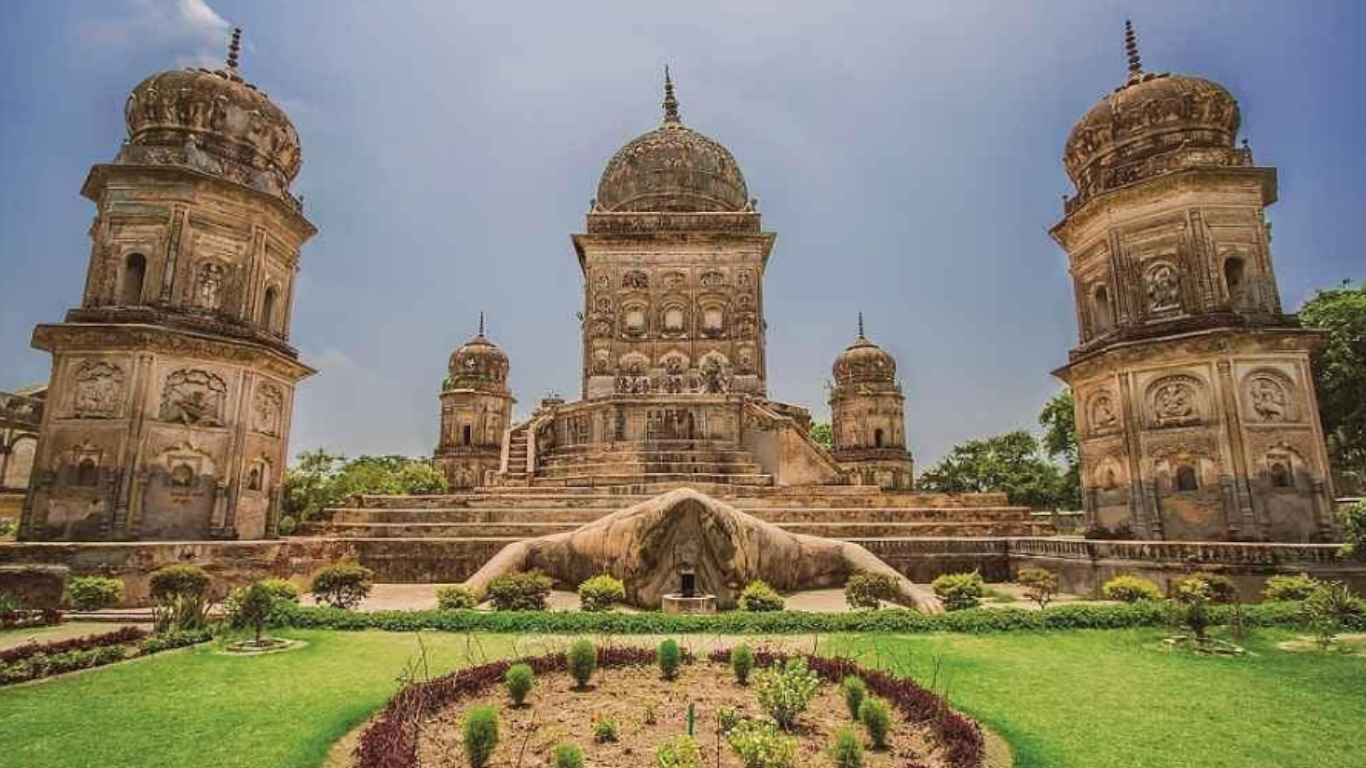
Lakhimpur Kheri district, nestled in the northern plains of Uttar Pradesh, is a region known for its natural beauty, historical richness, and cultural diversity. Bordered by Nepal in the north, this district forms a part of the Terai region and is home to fertile lands, dense forests, and vibrant wildlife. It is the largest district in Uttar Pradesh by area, and its significance lies not just in geography but also in its socio-political and environmental importance.
Often overshadowed by more well-known cities, Lakhimpur Kheri quietly carries a legacy of ancient civilizations, freedom movements, and ecological diversity. The district headquarters is Lakhimpur town, which, along with Kheri, forms the urban core of the region. Whether you’re a traveler seeking wildlife adventures or a historian curious about the past, this district has something to offer for everyone.
Historical Roots: A Land of Ancient Significance
The history of Lakhimpur Kheri dates back centuries. While it doesn’t find much mention in popular historical narratives, the region has witnessed several cultural and political changes over time. It was once under the rule of the Mauryas and Guptas, followed by the Delhi Sultanate and later the Mughals. During the British Raj, the district became a part of the United Provinces and was known for its strong resistance during the 1857 Revolt.
One of the most notable historical landmarks is the Nighasan Tehsil area, which has archaeological evidence pointing to settlements from ancient times. Several old temples and mosques also dot the region, showcasing the religious harmony and architectural diversity.
Freedom fighters from this district played a role in India’s independence movement. Names like Nanak Saran, a social reformer and freedom fighter, are remembered with pride by the local people. Even today, the past echoes through the folk songs, local legends, and cultural traditions that survive across villages.
Geography and Climate: Where Forests Meet Farmlands
Lakhimpur Kheri is located in the Terai belt, which means the district is part of the lowlands that lie just south of the Himalayas. This geographical positioning gives the district a unique mix of thick forests, grasslands, wetlands, and rivers. The Sharda, Ghaghara, and Gomti rivers flow through the region, enriching its soil and supporting agriculture and wildlife.
The climate here is tropical, with hot summers, a strong monsoon season, and cool winters. The lush greenery during the rainy season makes the district especially scenic. However, frequent flooding from rivers, especially during the monsoon, poses challenges to farmers and local residents.
The fertile soil has made agriculture the backbone of Lakhimpur Kheri’s economy. Sugarcane, wheat, rice, and pulses are commonly grown here. The area is also famous for its sugar mills, with Lakhimpur Kheri being one of the largest sugar-producing districts in the country.
Dudhwa National Park: The Green Jewel of Lakhimpur Kheri
No conversation about Lakhimpur Kheri is complete without mentioning Dudhwa National Park. This park is not only one of India’s most important protected areas but also a source of pride for the people of the district. Spread over a vast area, Dudhwa is part of the Dudhwa Tiger Reserve, which also includes Kishanpur and Katarniaghat wildlife sanctuaries.
The park is home to several rare and endangered species like the Bengal tiger, Indian rhinoceros, swamp deer (barasingha), and hispid hare. It also attracts bird watchers from all over the world due to its rich avian population, including migratory birds during winters.
Jeep safaris, bird watching, and nature walks are some of the popular activities in Dudhwa. The forest’s beauty, combined with the excitement of spotting a tiger or a herd of elephants, makes it a must-visit destination for nature lovers.
Dudhwa also plays a vital role in environmental conservation and biodiversity protection. The local communities, forest officers, and conservationists work together to ensure that this fragile ecosystem is preserved for future generations.
Culture and People: A Tapestry of Traditions
The cultural fabric of Lakhimpur Kheri is colorful and diverse. It is home to people from various communities including Hindus, Muslims, Sikhs, and tribal groups like the Tharus. The Tharu tribe, in particular, is native to the Terai belt and has a unique culture that includes folk dances, traditional crafts, and a deep respect for nature.
Festivals in this district are celebrated with great enthusiasm. Holi, Diwali, Eid, and local fairs are occasions when people come together regardless of their religion. The annual fair in Gola Gokarannath, a major religious site dedicated to Lord Shiva, attracts lakhs of devotees from across the region.
Folk music and dance also form an important part of daily life. Instruments like dholak, manjira, and harmonium are commonly used in weddings and festivals. The simplicity and warmth of the people here leave a lasting impression on anyone who visits.
Education and literacy levels are improving steadily, with new schools and colleges being opened across rural and urban areas. However, like many other districts in India, Lakhimpur Kheri still faces challenges in healthcare, infrastructure, and employment.
Places to Visit in Lakhimpur Kheri
While Dudhwa National Park is the crown jewel, Lakhimpur Kheri has many other interesting places to visit. Here’s a list of some notable destinations:
1. Gola Gokarannath (Chhoti Kashi): This temple town is known as the “Little Kashi” and is famous for the Shiva Temple that draws pilgrims year-round. The temple complex becomes particularly vibrant during the month of Sawan.
2. Frog Temple, Oel: This is a one-of-a-kind temple located on the back of a giant frog structure, dedicated to Lord Shiva. Its unique architecture makes it a curiosity for tourists and devotees alike.
3. Nighasan: An ancient town with deep historical and religious roots. The old temples and traditional houses reflect the rich cultural heritage of the district.
4. Kheri Town: A small town adjacent to Lakhimpur city, Kheri has historical significance and serves as an administrative center for the district.
5. Kishanpur Wildlife Sanctuary: Located close to Dudhwa, this sanctuary is part of the Tiger Reserve and offers an extended experience for wildlife enthusiasts.
Economy and Development: A Region in Transition
Agriculture forms the backbone of Lakhimpur Kheri’s economy. Sugarcane farming and sugar mills dominate the industrial sector. The Bajaj Hindusthan Sugar Mill in Gola is among the biggest sugar mills in Asia, providing employment to thousands of locals.
Over the years, other sectors like education, small-scale industries, and retail businesses have also started to grow. There is a slow but steady movement towards modernization, especially in the urban centers.
Government initiatives like road construction, skill development programs, and improved power supply are helping in bridging the gap between rural and urban development. Still, issues like poor connectivity in some villages, lack of healthcare infrastructure, and seasonal unemployment continue to be major challenges.
The youth of the district are now becoming more aware of career opportunities outside agriculture, with many pursuing higher education, competitive exams, and digital entrepreneurship.
Connectivity and How to Reach Lakhimpur Kheri
Lakhimpur Kheri is well connected by road and rail. The district lies approximately 130 kilometers from Lucknow, the capital of Uttar Pradesh. Buses, taxis, and private vehicles make for easy travel from nearby cities.
The nearest railway station is Lakhimpur Junction, which connects the district to major cities like Delhi, Lucknow, and Bareilly. A few more local stations in the district like Gola Gokarannath and Mailani add to the accessibility.
For those traveling by air, the nearest airport is Chaudhary Charan Singh International Airport in Lucknow. From there, one can reach Lakhimpur Kheri by road in about 3-4 hours.
Conclusion: Lakhimpur Kheri – A Hidden Gem Worth Exploring
Lakhimpur Kheri is not just a place on the map of Uttar Pradesh. It is a living, breathing region where nature and history walk hand in hand. With its vast forests, ancient temples, vibrant culture, and simple way of life, it offers a refreshing experience away from the chaos of city life.
Whether you’re a tourist looking for natural beauty, a student researching local history, or someone simply curious about the diverse regions of India, Lakhimpur Kheri won’t disappoint. Its challenges are real, but so is the spirit of its people — always moving forward while staying rooted in tradition.
This district may not yet be a popular tourist destination, but those who visit rarely forget the charm it holds. Lakhimpur Kheri stands as a reminder that beauty, depth, and resilience can be found in even the most unexpected corners of our country.



